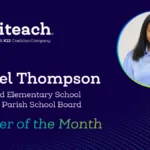Great Books for Elementary Teachers
Discrimination, The Cold War, and The Environment
When I was in school some of my best learned lessons were ones that were taught to me through a great story. Hansel and Gretel is one of the first stories that comes to mind which children must escape the fate of a witch that wants to eat them. A second similar story is of Little Red Riding, a second fairy tale from the Brother’s Grimm which we all know is once again about a child who outwits a threatening beast or predator. Have you read the story Matilda? It is the same storyline and an earlier version of the story would be Home Alone.
“Folklorists Iona and Peter Opie indicate in The Classic Fairy Tales (1974) that “Hansel and Gretel” belongs to a group of European tales especially popular in the Baltic regions, about children outwitting ogres into whose hands they have involuntarily fallen.” (Wikipedia)
These types of stories are great for teaching children to avoid strangers and to stand up for themselves, but, there are other stories that teach even bigger ideas. When I was in sixth grade my teacher read us a handful of stories from Dr. Seuss that taught us about discrimination, the cold war and the environment. These big ideas were so simple laid out in three books (Sneetches and other Stories, The Butter Battle Book, and The Lorax) that they took on real meaning in my life early on. If you haven’t read them, I encourage you to grab a copy and keep them in your personal library and read the stories to young children and people who need to understand complex topics in a simple and clever way.
 Sneetches and other Stories
Sneetches and other Stories
Teaching Students about Discrimination
When I was growing up I was often viewed as “different”. I think everyone feels “other than” around some part of who they are. For me, it was my ethnicity. I am the product of a mixed-race couple and I am three races. This created in me the idea that I didn’t really fit in with any particular people group. I also had a very high voice and I started first grade at 4 years old. So I was younger than most of the other students in my classroom and therefore, emotionally much less mature. I cried easily as a young and sensitive child and I remember being picked on as early as 4th grade.
I remember my sixth grade teacher speaking up for me around my voice tone and he read us the story of the Star Bellied Sneetches. The Star-Bellied Sneetches were creatures who discriminated against other Sneetches because they didn’t have stars on their bellies. They were treated poorly because they were different. Eventually, a clever man named Mr. McBean comes along with a machine to add stars to the bellies of the Sneetches who were born without stars. For just $10 you could finally be like the other Sneetches. Well, soon, so many Sneetches had stars on their bellies that the Star-Bellied Sneetches paid Mr. McBean to remove their stars. This went back and forth until soon no one remember who originally had stars and who didn’t have stars on their bellies. Mr. McBean leaves the town a rich man and we all learn the lesson that we aren’t all that different. We are all humans, or in this case Sneetches. Why do we feel the need to tear another group down and make them feel small?

If you are dealing with bullying or discrimination in your classroom, this is a great book to read to get the discussion going at an early age and to teach students the importance of valuing each other’s differences.
 The Butter Battle Book
The Butter Battle Book
Teaching Students about War
I great up in a time where there seemed to be the threat of war all the time. I remember in 5th grade a speaker came to speak to our class about the Star Wars Defense System. I was scared and intrigued at the same time. My dad was a “prepper” and was always prepared for anything – including war, so to hear about the cold war was not an uncommon thing in our household.
Reagan’s Star Wars. On March 23, 1983, President Reagan proposed the creation of the Strategic Defense Initiative (SDI), an ambitious project that would construct a space-based anti-missile system. This program was immediately dubbed “Star Wars.” (Wikipedia)
I didn’t really understand the cold war and why were were constantly building bigger armies and more missiles, etc. But my teacher read us The Butter Battle book and while in many ways it is an oversimplification of a complex situation, it does a great job of starting the conversation with students about war and how often it can be over things that are trivial – like who butters their bread on which side of the bread.
The Plot
“The Yooks and Zooks live on opposite sides of a long curving wall. The narrator of the story is a Yook child whose grandfather takes him to the wall, explaining he is a retired soldier. The Yooks wear blue clothes, but the Zooks wear orange. The difference between the two cultures is that while the Yooks eat their bread with the butter-side up, the Zooks eat their bread with the butter-side down. The conflict between the two sides leads to an escalating arms race, which results in the threat of mutual assured destruction.” (Wikipedia)
 The Lorax
The Lorax
Teaching Students about the Environment
I grew up in the country and we didn’t really take into consideration the environment. It’s something you can easily take for granted. However, in college I had to do a paper on the rainforest and for the first time in my life I realized the value of one of earth’s most precious resources. The rainforest is often called “Earth’s Medicine Chest”. Did you know that the Liana’s that are the vines that we got some of our first sleeping medicine from. There are also poison dart frogs in the rain forest that can kill you just by touching them – so there are many wonderful and dangerous things in the rainforest – which is great because students love to learn about wonderful and dangerous things. However, there has been a lot of deforestation over the years and so The Lorax is a great way to tell the importance of taking care of our environment.
The Plot
A young unnamed boy living in a polluted area visits a strange isolated man called the Once-ler on the Street of the Lifted Lorax. The boy pays the Once-ler fifteen cents, a nail, and the shell of a great-great-great grandfather snail to hear the legend of how the Lorax was lifted and taken away.
The Once-ler tells the boy of his arrival in a beautiful valley containing a forest of Truffula trees and a range of animals. The Once-ler, having long searched for such a tree as the Truffula, chops one down and uses its silk-like foliage to knit a Thneed, an impossibly versatile garment. The Lorax, who “speaks for the trees” as they have no tongues, emerges from the stump of the Truffula and voices his disapproval both of the sacrifice of the tree and of the Thneed itself. However, the first other person to happen by purchases the Thneed for $3.98, so the Once-ler is encouraged and starts a business making and selling Thneeds.
The Once-ler’s small shop soon grows into a factory. The Once-ler’s relatives all come to work for him and new vehicles and equipment are brought in to log the Truffula forest and ship out Thneeds. The Lorax appears again to report that the small bear-like Bar-ba-loots, who eat Truffula fruits, are short of food and must be sent away to find more. The Lorax later returns to complain that the factory has polluted the air and the water, forcing the Swomee-Swans and Humming-Fish to migrate as well. The Once-ler is unrepentant and defiantly tells the Lorax that he will keep on “biggering” his business, but at that very moment, one of his machines chops down the very last Truffula tree. (Wikipedia)
Ready to Teach? Choose iteach’s Online Accredited Teacher Certification Program
If you want to be a teacher that influences and changes the world, we can help. iteach has created a program that allows you to start teaching in a matter of weeks and is affordable.




